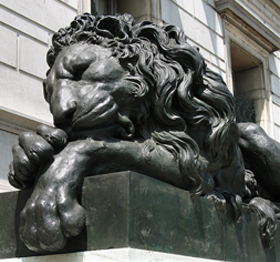There’s been a lot of talk and worry, sharing of speculation, half-truths, untruths, some facts, and a lot fear about what will come next for the Corcoran.
Only two things are known for sure: First, that on July 18th, 2014, there will be a court hearing about breaking the historic Corcoran Deed and Charter with a judge, where the Save the Corcoran coalition (STC) will get time at the podium. This court hearing was asked for by the current Corcoran trustees. Save the Corcoran has asked to be a part of it. Anyone can attend this hearing on July 18th.
Please attend:
When: July 18, 2014 2:30 pm
Where: Courtroom 317, Moultrie Courthouse, 500 Indiana Ave. NW, Washington D.C. 20001
Second, that July 18th will determine if a judge rules to allow STC to articulate its case in court. If a judge rules that STC cannot be part of the suit, the trustees plan to dissolve the Corcoran into GWU, and the NGA moves forward. Until then, Save the Corcoran continues to add more plaintiffs to the suit and encourages anyone to contact the Office of the Attorney General.
A critically important note: Save the Corcoran’s work, for the past two years, has ONLY been done to work toward a vibrant future for the college, the museum, and all of the people affected by such, including its students, alumni and staff. This work is not done to cause more damage. It is done in the hopes of creating a secure, thriving future for the Corcoran—as a whole—led by capable leaders with proven track records; and guided by its founding documents, as established so long ago to encourage the American Genius. We do not envision a lop-sided Corcoran with the museum or the college having greater importance. Both are needed – they are interdependent – and they can be led to thrive.
Save the Corcoran cannot negotiate a partnership or move in any other direction except toward the court date on July 18th. This date decides everything. As one faculty member pointed out, if STC loses, at least we took a stand and told the public some of what the board has done to undermine the Corcoran, including damaging the health and futures of real people – staff, faculty, and students.
There is no way to predict if Save the Corcoran will get standing in court on July 18th. While we are optimistic about our chances, the Trustees will strongly oppose our efforts. If Save the Corcoran does not get standing, the trustees plan goes forward. None of the work we have done thus far slows down the process of the trustees’ current plan. It does not delay their work with GW, or use extra funds that the Corcoran doesn’t have. They are already paying their lawyers to do this deal.
Clearly, we have a “Which came first: The chicken or the egg?” deal here. Staff, faculty, curators, members, donors, past trustees, alumni – so many people—want the board held accountable for squandering the Corcoran’s assets, hiring unqualified leaders, and so much more. But staff, faculty, and curators also need their jobs; even if they are just one-year contracts, with no guarantee that they will get anything more from GW or NGA.
And those who have already lost their jobs are counting on severance packages to carry them through until they find work. Joining a lawsuit, at this time for any of the above, is risky. Yet some have joined, and they will be protected.
Finally, if STC gets standing, faculty and staff want and deserve a sound plan to keep the Corcoran running while the court decides what is to come next. However, a solid plan cannot truly unfold in great detail until the current board leaves the Corcoran. This will happen only if they are forced out by their own past wrongdoing, as decided by the courts.
Despite firing everyone else, the trustees aren’t going to fire themselves. They are not going to leave, nor are they going to ask us to join them in partnership. We’ve tried for over two years to have a meaningful dialogue with the board. They have brushed aside our repeated offers to help, and have done as they wished, while not being truthful to the people fighting so hard every day to make the Corcoran work. And we know this has not been in the best interest of the Corcoran.
In the words of one faculty member, “Everyone is totally tapped out, overworked, disrespected, and aware of their insecure future at GW or NGA. Not to mention the worries about what the students will face once that GW takes over.”
Save the Corcoran knows, intimately, that the faculty’s position has been extremely difficult in all of this. If they do not get renewed contracts after their one-year GW contracts, what is left of the college as an internal mechanism of GW from 2015 onward? Further, some of the members of this lawsuit are faculty hoping to work in September. Save the Corcoran is not the opposition to the Corcoran – we are also the Corcoran. We are its students, faculty, alumni, donors, staff, former staff, members, and people in the art community. Not all names are public, in order to protect those who want to speak out about what has happened over the past two years but fear for their jobs or severance.
There is a great concern that if the institution is split –through the Trustee-initiated GW/NGA deal—and the collection is distributed across the nation, it will be easy to challenge the original Corcoran intent since the institution won’t exist anymore. We very much feel that this lawsuit is the last chance to save the Corcoran.
All of this said, it would be irresponsible for any intervening party—STC included—to not be concerned about 550 currently enrolled students who plan to work toward their degrees this September, as well as the faculty and staff who will make this happen. Students have not only paid for their education and are entitled to one; they are the future of any new Corcoran, and faculty is its life-blood. This goes for the museum staff as well.
No one left inside of the Corcoran thinks the Board has the capacity to put a contingency plan together. In short, trustees tried to “bake the cake,” making any option other than the dissolution of the institution impossible.
We’ve learned that well before STC announced our complaint, faculty were already dreading the next school year under any circumstances; there will be only a few, extremely dedicated staff members left, and twenty-two ranked faculty to educate students through what promises to be an extremely disorganized and rough year, after which faculty might get fired anyway.
This was the feeling BEFORE Save the Corcoran launched the suit last week. We did not create this terrible reality – the Corcoran trustees did. They are calling all of the shots; 13 people who have little experience running museums or schools are making all of this happen.
If Save the Corcoran gets standing on July 18th, new leadership will need to work with the Attorney General, the faculty, and the staff to get through this school year while a new plan or leadership group works on a powerful plan for the future. Save the Corcoran will not support any deal that shuts down the school. Since Trustees have not planned a museum season, this will need to be addressed. An emergency plan will need to be created.
Wayne Reynolds, who was courted by the Corcoran – by Harry Hopper himself— in November 2012 to become the Board Chair, still wants to be the Board Chair. Wayne didn’t become Board Chair then because he did not approve of the Board’s course of action, and he told them so. But his last stint was in reviving and invigorating Ford’s Theater, growing the endowment from $0 to $50 million. He renovated the theater and the museum. He can do this here; he can save the Corcoran with our help. But we’ve got to give him the chance, and then we all have to help him.
As always, if you have questions or if you would like to talk to anyone at Save the Corcoran, email savethecorcoran@gmail.com





